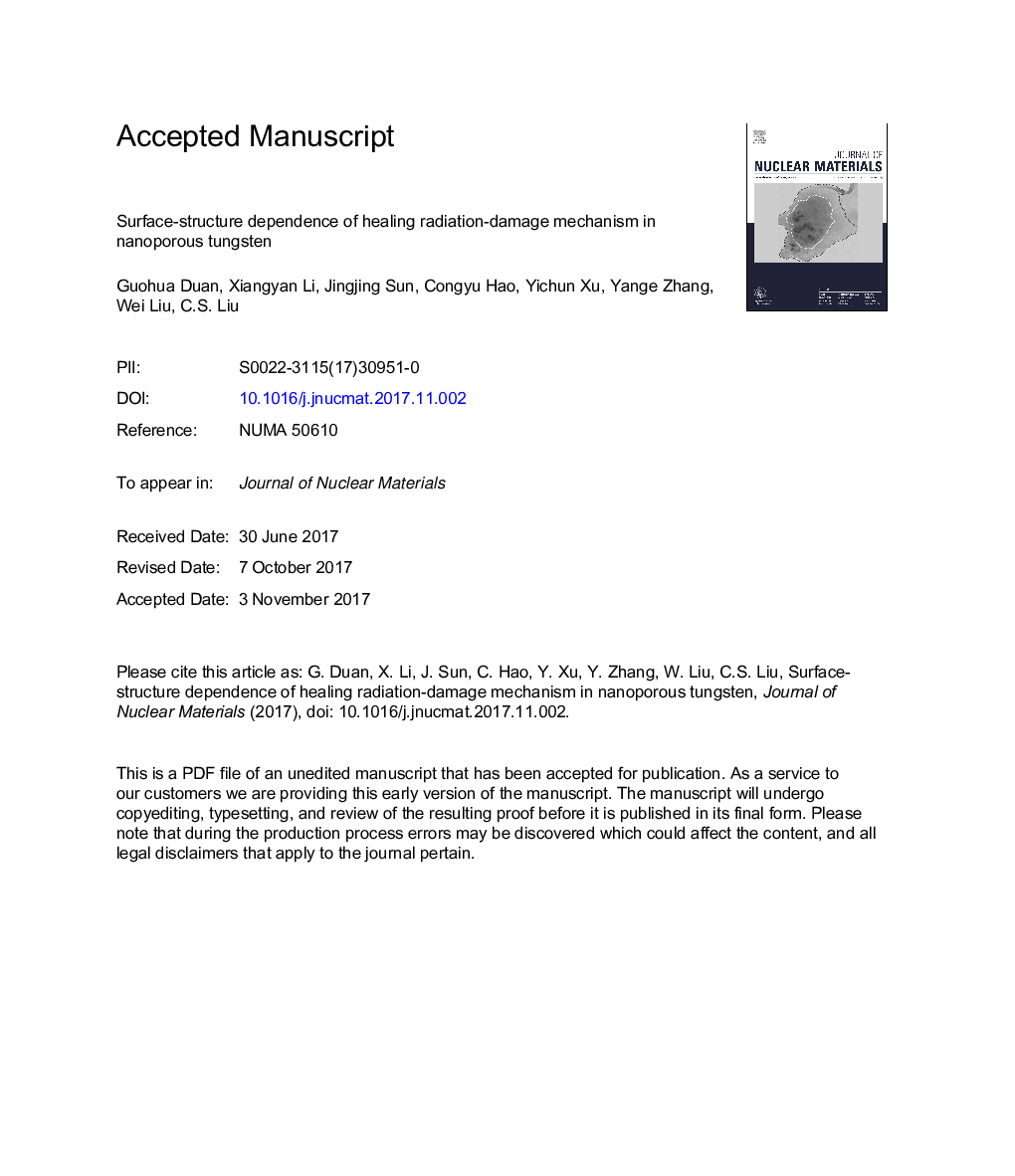| Article ID | Journal | Published Year | Pages | File Type |
|---|---|---|---|---|
| 7963666 | Journal of Nuclear Materials | 2018 | 34 Pages |
Abstract
Under nuclear fusion environments, displacement damage in tungsten (W) is usually caused by neutrons irradiation through producing large quantities of vacancies (Vs) and self-interstitial atoms (SIAs). These defects not only affect the mechanical properties of W, but also act as the trap sites for implanted hydrogen isotopes and helium. Nano-porous (NP) W with a high fraction of free surfaces has been developed to mitigate the radiation damage. However, the mechanism of the surface reducing defects accumulation is not well understood. By using multi-scale simulation methods, we investigated the interaction of the SIA and V with different surfaces on across length and time scales. We found that, at a typical operation temperature of 1000Â K, surface (1 1 0) preferentially heals radiation damage of W compared with surface (1 0 0) and boundary (3 1 0). On surface (1 1 0), the diffusion barrier for the SIA is only 0.68Â eV. The annihilation of the SIA-V happens via the coupled motion of the V segregation towards the surface from the bulk and the two-dimensional diffusion of the SIA on the surface. Such mechanism makes the surface (1 1 0) owe better healing capability. On surface (1 0 0), the diffusion energy barrier for the SIA is 2.48Â eV, higher than the diffusion energy barrier of the V in bulk. The annihilation of the SIA-V occurs via the V segregation and recombination. The SIA was found to migrate one-dimensionally along a boundary (3 1 0) with a barrier of 0.21Â eV, leading to a lower healing efficiency in the boundary. This study suggested that the on-surface process plays an important role in healing radiation damage of NP W in addition to surface-enhanced diffusion and annihilation near the surface. A certain surface structure renders nano-structured W more radiation-tolerant.
Related Topics
Physical Sciences and Engineering
Energy
Nuclear Energy and Engineering
Authors
Guohua Duan, Xiangyan Li, Jingjing Sun, Congyu Hao, Yichun Xu, Yange Zhang, Wei Liu, C.S. Liu,
